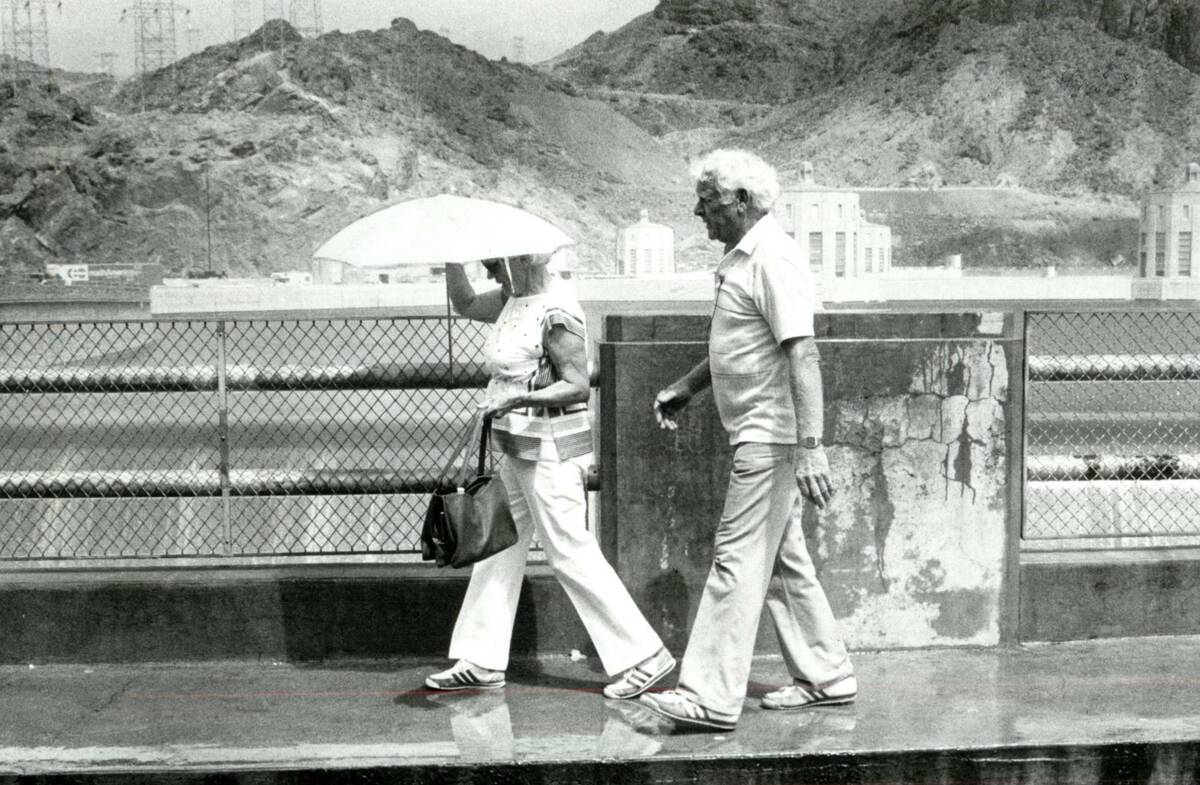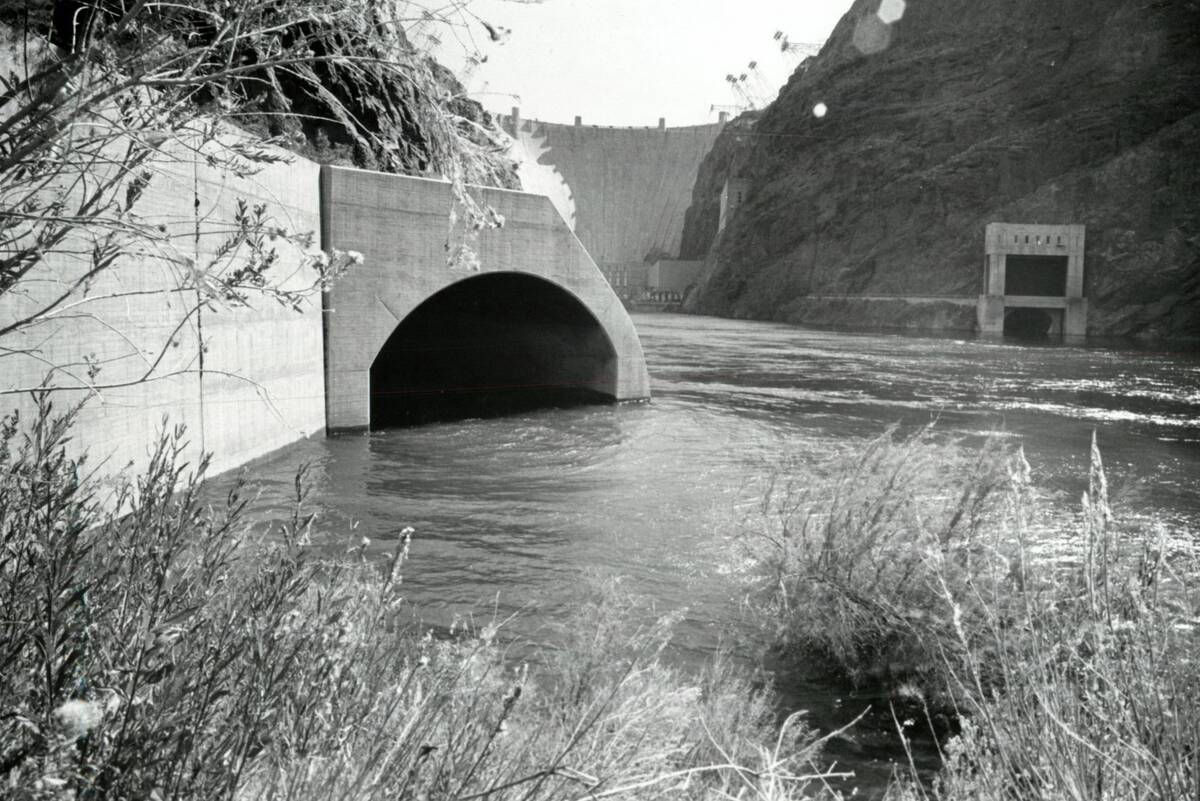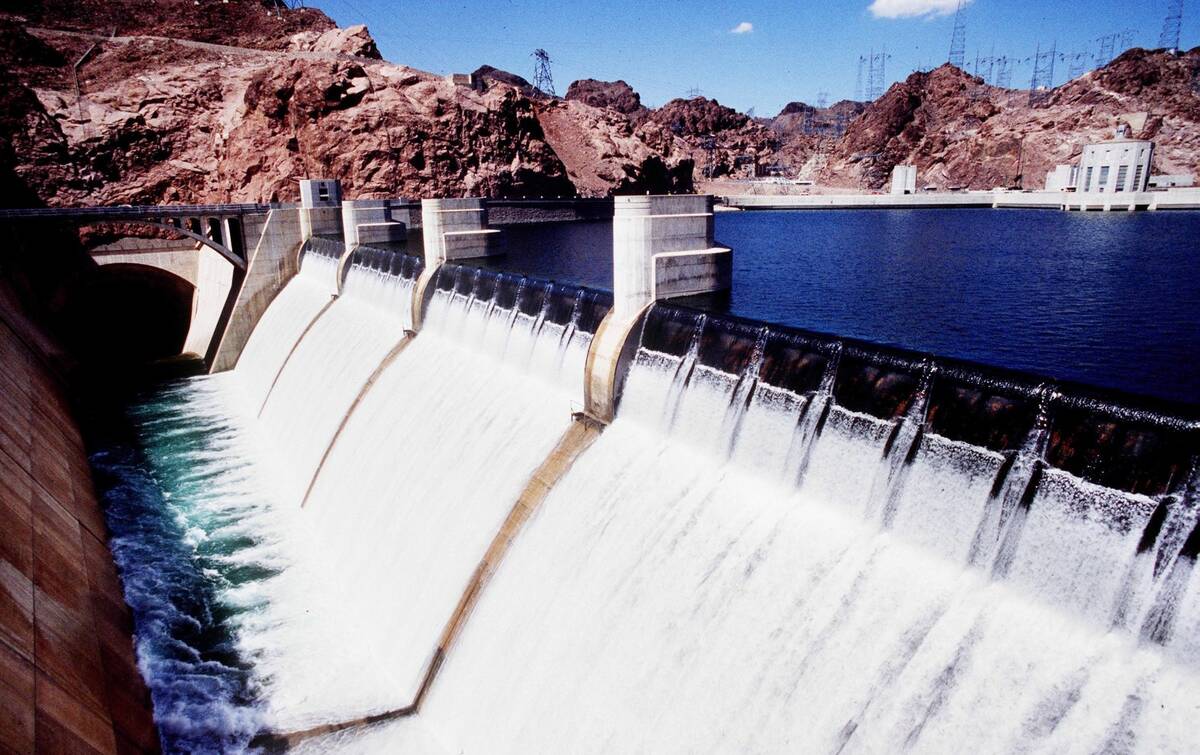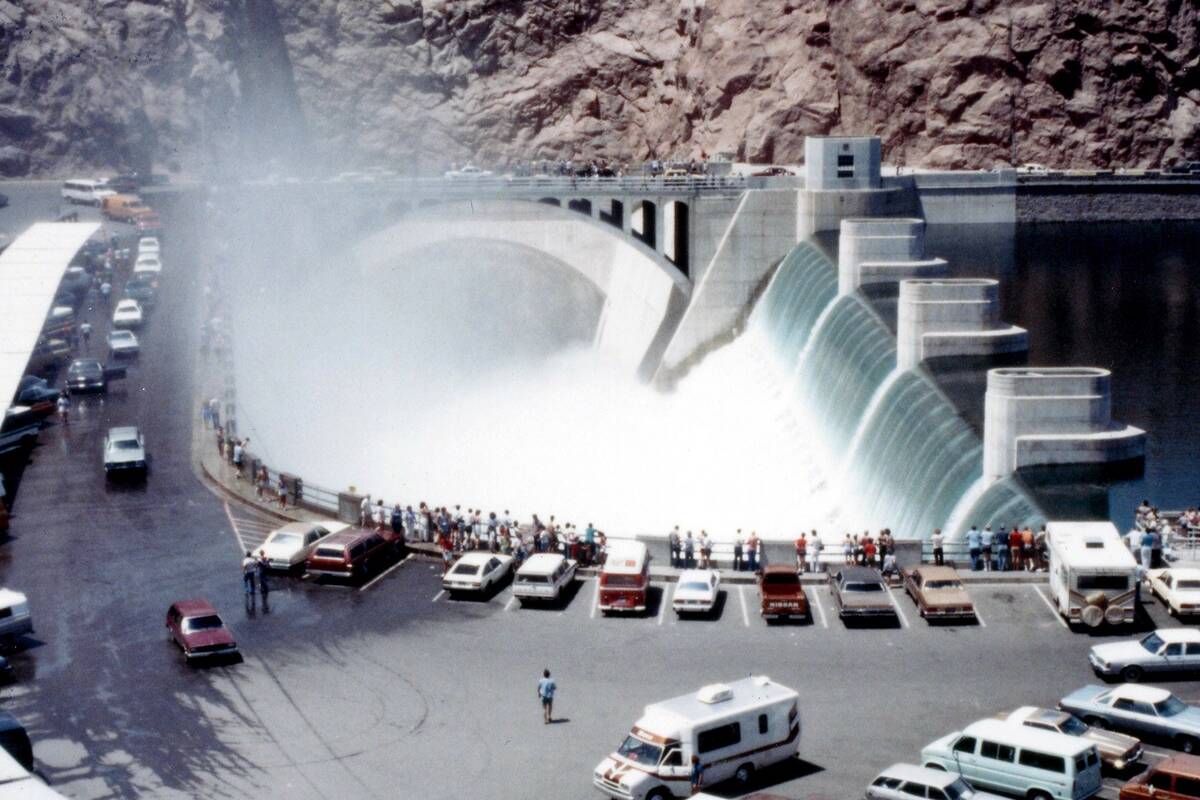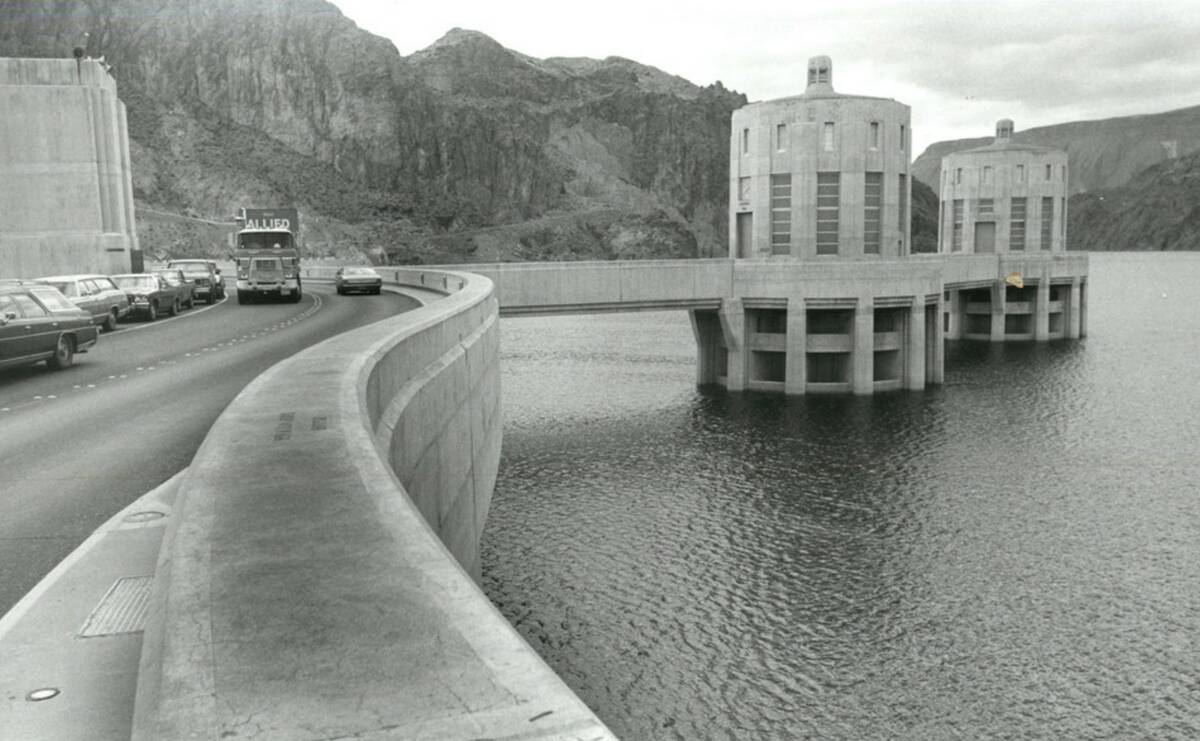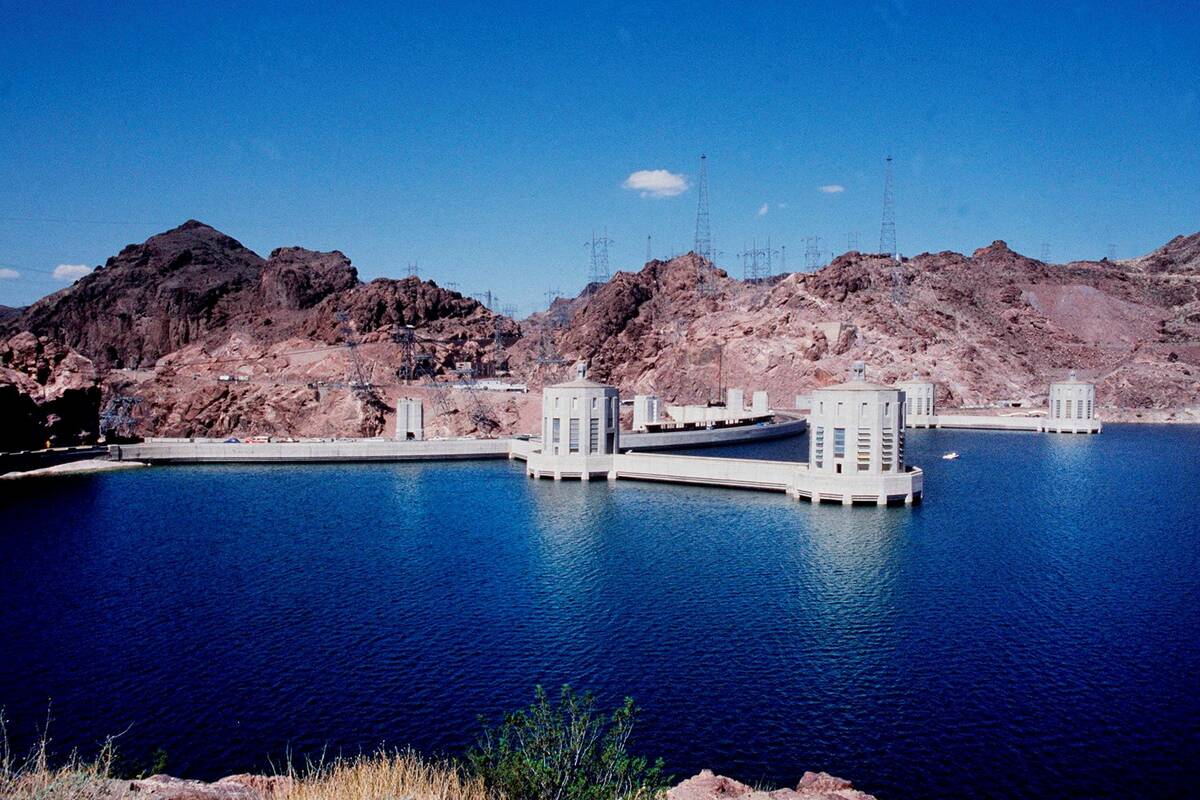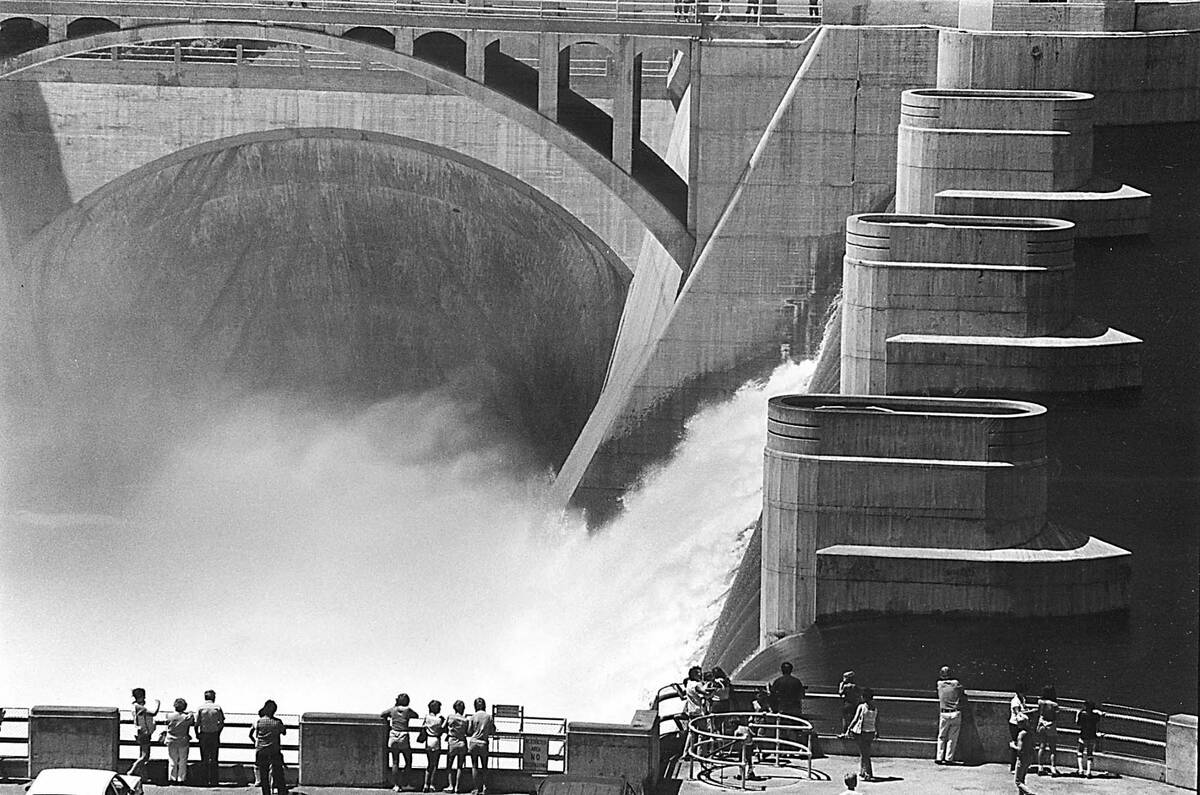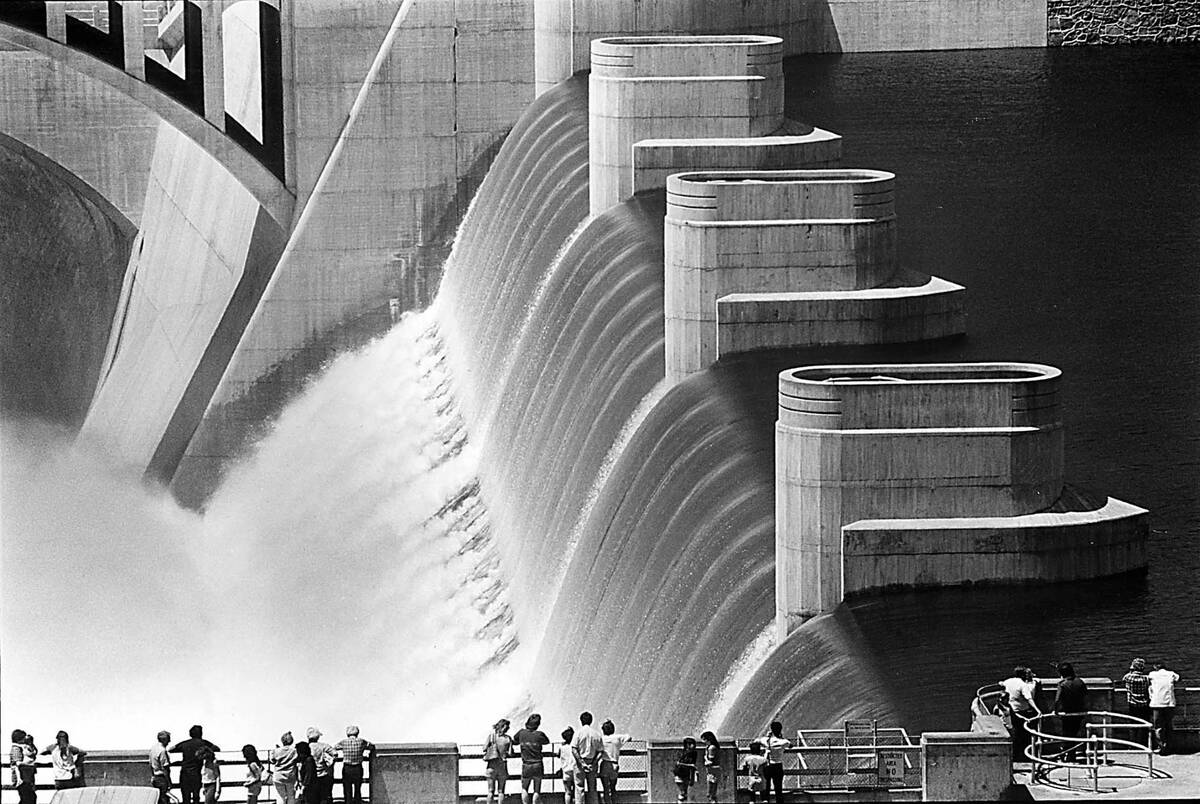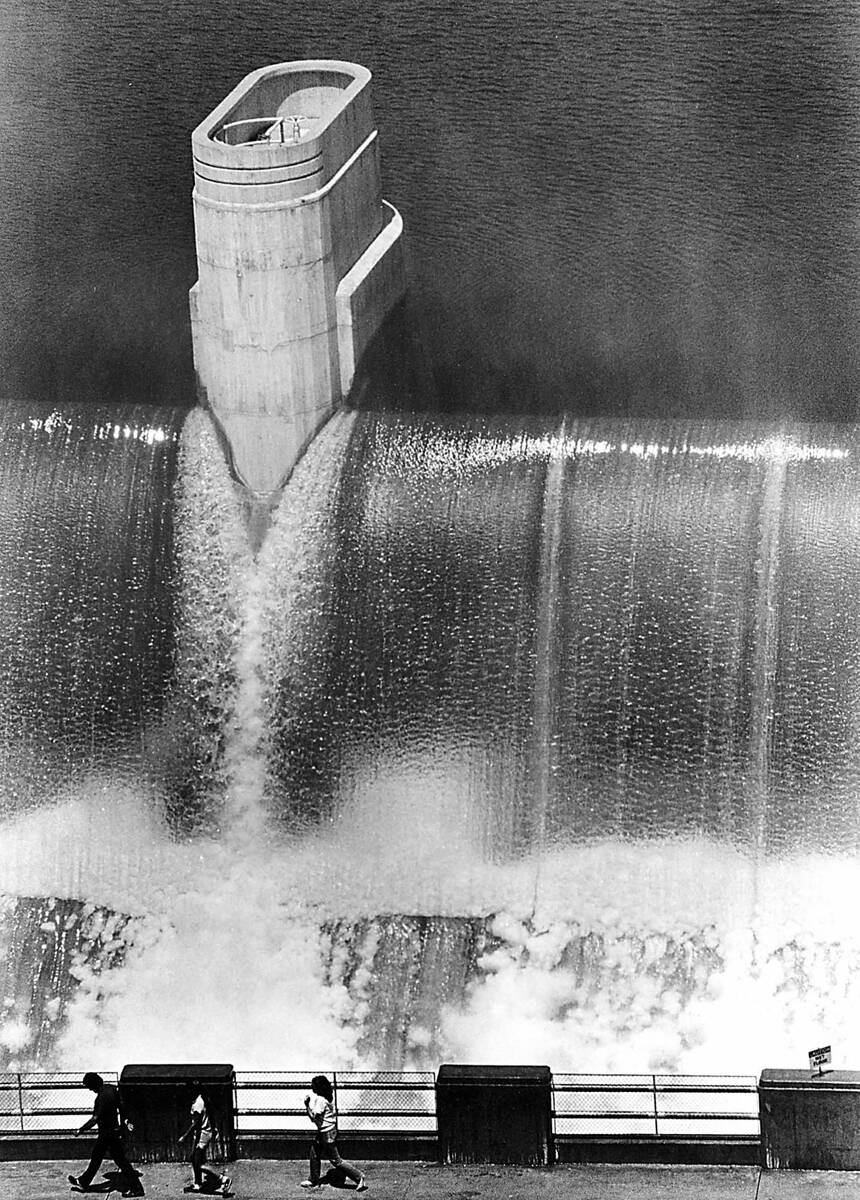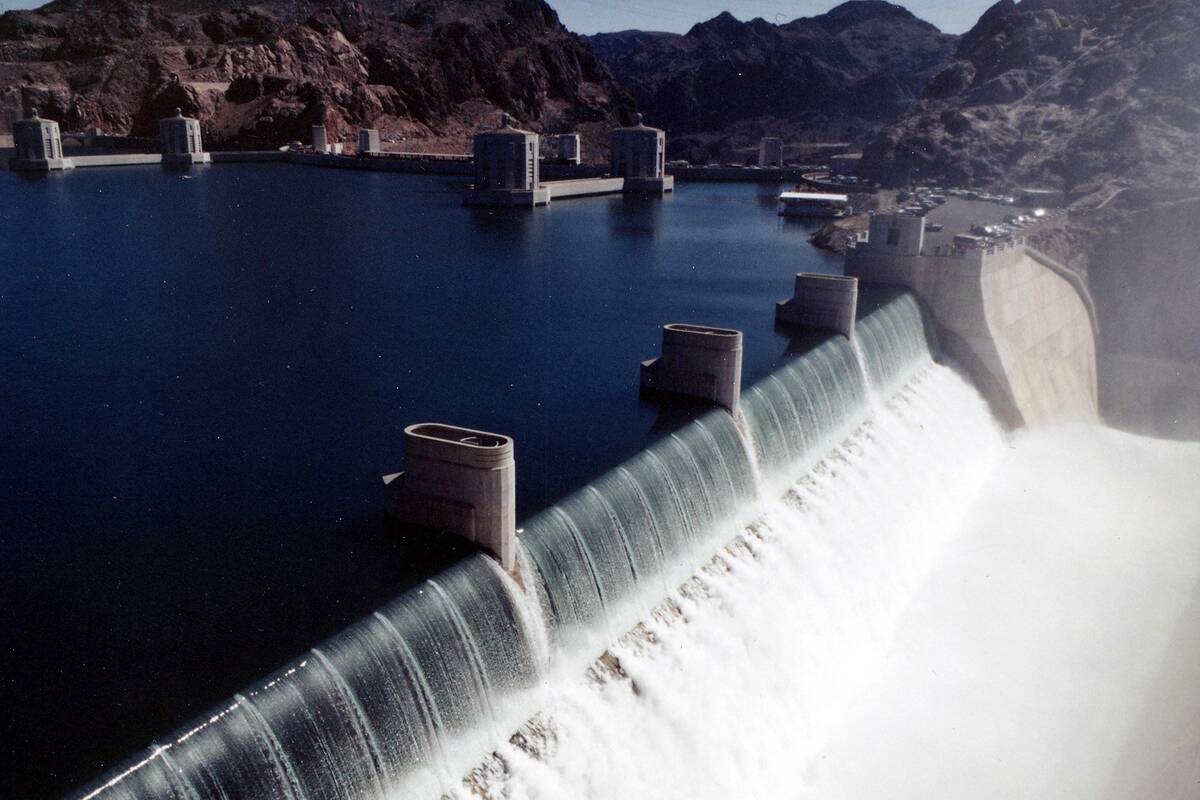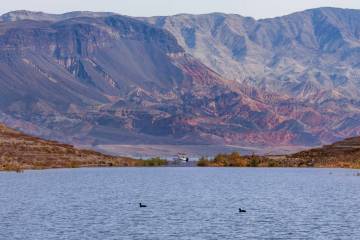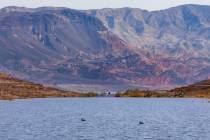REMEMBER WHEN: Hoover Dam opens spillways in July 1983 — PHOTOS
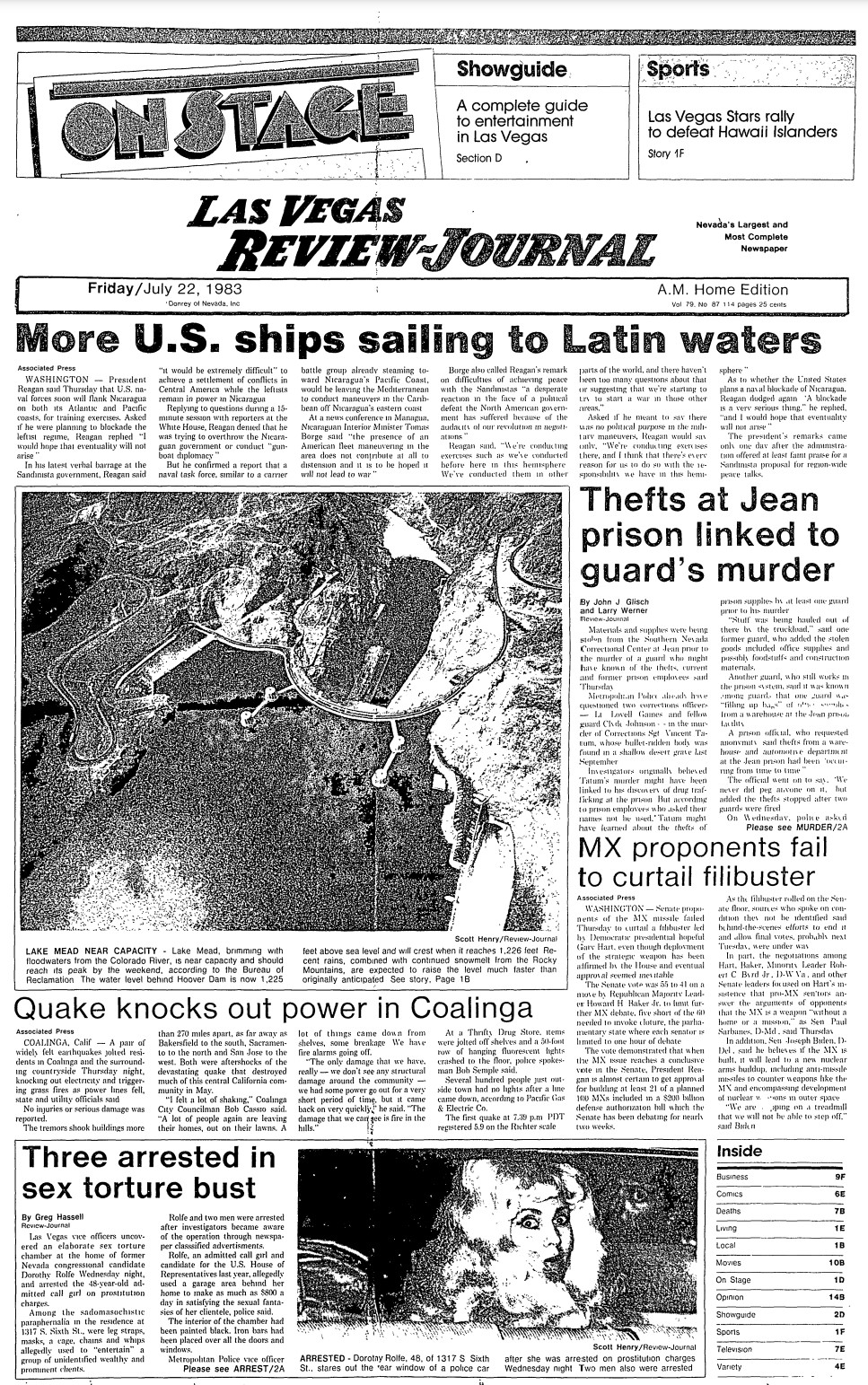
Oh, to hear these words again: “Lake Mead, brimming with floodwaters from the Colorado River, is near capacity …”
On this day in 1983, Review-Journal readers were treated to front-page news (with a large photo!) about the lake nearing capacity. In fact, the lake was so full that the Hoover Dam’s spillways were opened weeks earlier on July 3, creating a show for tourists. It was the first time the spillways had been opened since 1941. The dam opened in 1936.
The Bureau of Reclamation said the lake reached its highest elevation of 1,225.85 feet on July 24, 1983.
Since then, it’s been a slow decline for the reservoir, thanks to climate change and a 22-year megadrought.
The depth of the lake was 1,040.99 feet (above sea level) as of Wednesday, about 27 percent of capacity. One year ago, it was at a depth of 1,067.89 feet.
Parties at the dam
In that 1983 article, the RJ said “the swelling lake has swallowed beaches and submerged roads and boat ramps.” The opening of the spillways was triggered by “unprecedented snowfall” in the Rocky Mountains.
And when the spillways opened up, visitors flocked to the dam to see the rare spectacle.
“The force of the water funneling through the spillways kicks up heavy spray that drives some tourists to digging umbrellas out of car trunks,” reporter Jeanne M. Hall wrote. “And dam security guards report all-night parties as young people, whose favorite beaches have been gobbled by the lake, are using the spillways as their party site.”
“We’re getting all the beach bums,” L.A. Jacobsen, chief of police at Hoover Dam, told the RJ. “We had a wet T-shirt contest here one night with about 15 young women.”
One California tourist told the RJ that seeing the dam’s spillways in action was a “once in a lifetime” experience. “I can go to Vegas anytime,” he said.
More than 8 million people visited Lake Mead in 2020, making the park one of the National Park Service’s busiest sites.
Lake Mead, the largest reservoir in the U.S., supplies water to some 40 million people across seven states, tribal lands and northern Mexico.
— Chris Lawrence contributed to this report.
RELATED
Lake Mead through the decades — PHOTOS
Shrinking Lake Mead: 5 things to know
Shrinking Lake Mead reveals World War II-era boat



